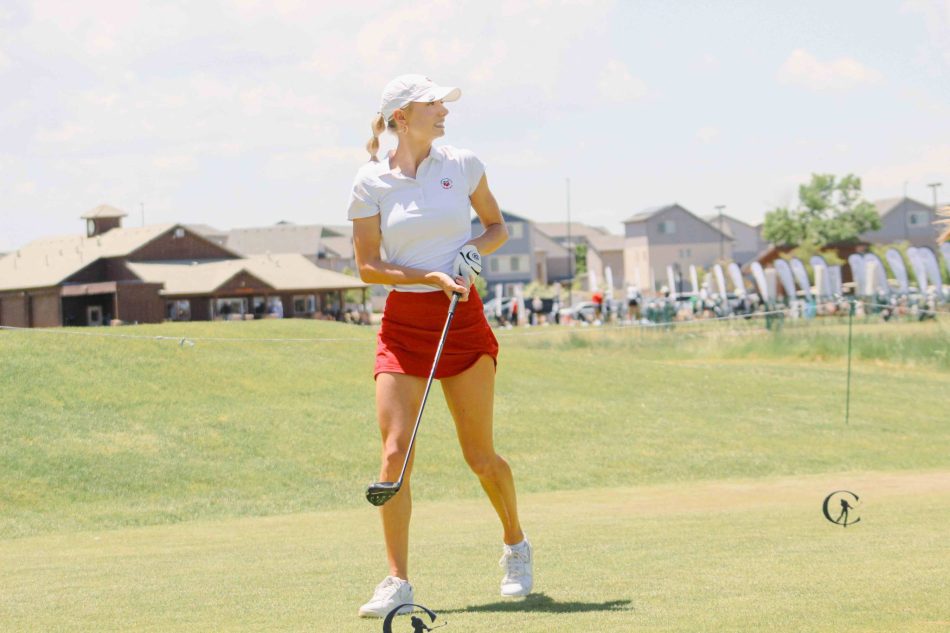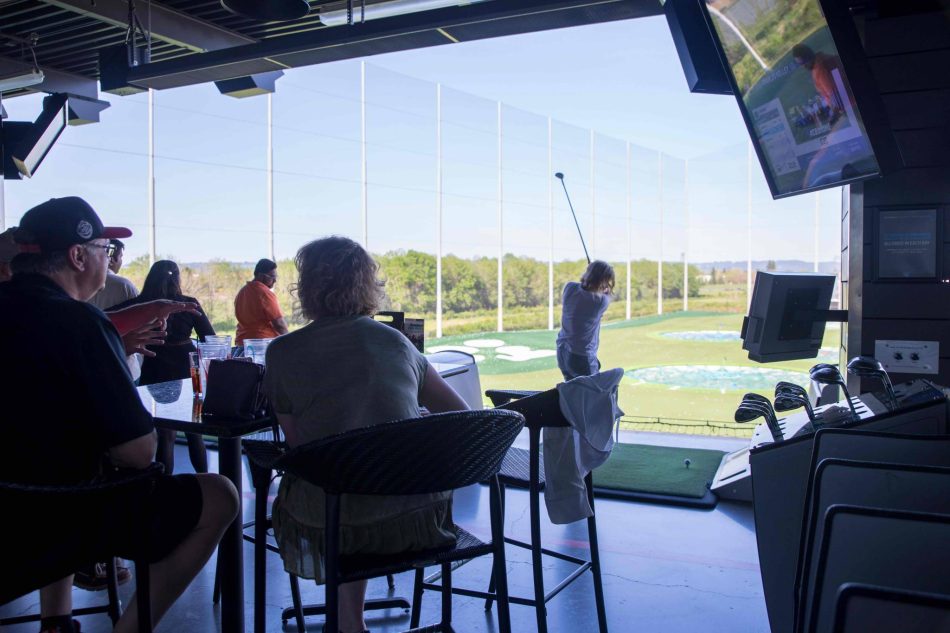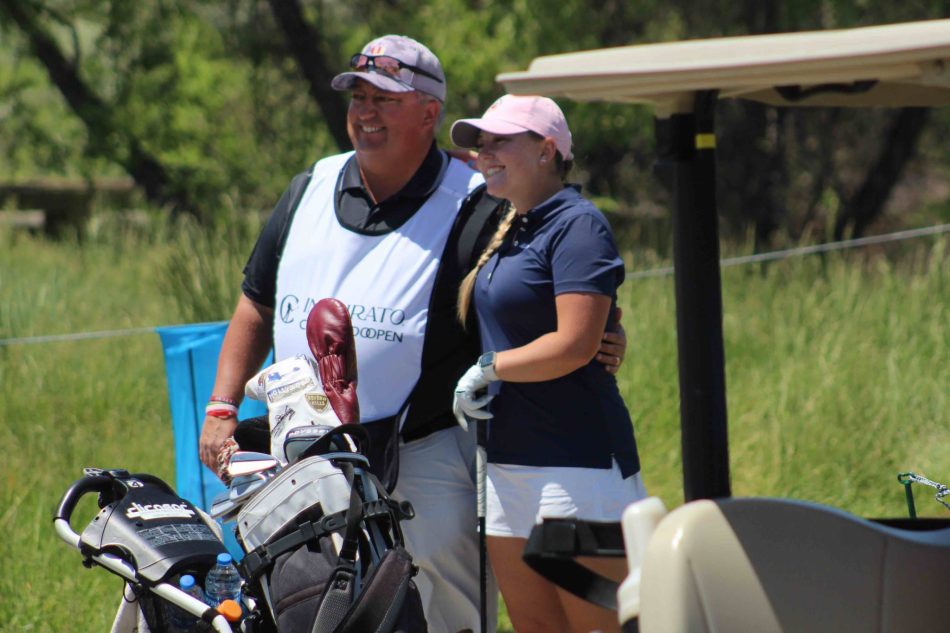Cheyenne Mountain Resort – Colorado AvidGolfer Golf Passport Partner of the week
Play one of Colorado’s great Pete Dye courses for less
BY KAYLEE HARTER
Kahlia Shaw was a volleyball player. But when the Smoky Hill High School sophomore injured her knee, she decided to give the golf team a try at her mom’s suggestion.
“I was like, you know what, why not? It’s something for me to do, I’m still being active, I’m getting fresh air,” she says. “I started golf, and I couldn’t get enough of it ever since.”
Kahlia is not alone. The number of women and girls in golf has seen steady gains in recent years, both on the national scale and here in Colorado.
Nationally, there were approximately 7 million female on-course golfers in 2023 — a 25 percent increase since 2019, according to the National Golf Foundation (NGF). That’s compared with a 2 percent increase for men in a similar time frame.
In 2019, the Colorado Golf Association had more than 16,800 female members. By the end of the 2023 season, that number had grown to more than 19,100 female members, a 13 percent increase.
“We’re at a big time with growth,” says Erin Gangloff, chief marketing officer for the Colorado Golf Association. She said they have seen growth in women’s leagues and the association’s highest women’s membership in recent years.
“During the pandemic, one of our worries was that we were going to see a decline with women mainly because they had to become caregivers, kids were home,” Gangloff said. “We saw that women needed to attend to the family, so golf leagues and that kind of extracurricular went by the wayside. And since that time, we’ve just started to see this increase.”
About 1 in 4 on-course golfers are women, according to NGF data. However, women make up an even larger share of golfers among beginners, juniors and off-course participants.

Sparking interest
Though 41 percent of beginners are women and girls, the initial interest in the sport can be one of the biggest barriers to getting started.
Kahlia and her sister Kahmari, a freshman who also started golfing this year, say that before they played, they thought of golf as a “boring” sport — something they now see as a misconception.
“I thought, like, all you have to do is hit a ball, it can’t be that hard,” Kahlia said. “Then you’re really like, ‘Oh, this is a lot more work than I thought.’ “ She said she began to see the game as an extremely tactical, mental sport — something she finds very rewarding. Her best friend is on the team too, and getting to spend time together and cheer each other on is a big part of what makes the sport fun. Gangloff says marketing the sport to girls is often different than for boys, who may have grown up playing the sport with their dads. It also has to compete with other popular team sports like tennis, soccer or lacrosse, though she notes golf makes for excellent cross training. “It’s just about making it fun,” she said. “It’s not just golf — it’s social; it’s, ‘what are you going to wear?’ If you can look good while doing a sport then why not? And giving it that feeling of making it a true team, be- cause golf is so individual, that then girls connect. You get the best of both worlds if you want to play an individual sport, but then you really do want to feel like you’re on a team, like other high school sports.”
Learning the game
Juniors are the largest growing segment of on-course golfers in the country, according to NGF, and more than a third of those juniors are girls. In 2000, just 15 percent of junior golfers were girls.
Having a good coach with a passion for the game can make a big difference in attracting and retaining youth golfers, Gangloff says. “You may not need experience, because if you have a passionate coach who knows what they’re doing and loves it, they’re going to help you,” she says. “And then you may make lifelong friends.”
Laurie Steenrod is one of those coaches.
She serves on the CGA board and has been a coach for more than two decades. She coaches the Shaw girls at Smoky Hill High School. In the 2024 season, Steenrod says she had eight brand-new players and one returning player.
“I have a passion for girls and women in sport in general,” Steenrod says. “This is one of my better activities.”
In coaching beginners, Steenrod says she keeps it fun with lots of games and challenges and models shots she’s asking her players to make.
She also relates it to sports the girls might be more familiar with: “Pretend like you’re about to shoot a free throw; get in an athletic posture,” and “Ladies, you’re not playing volleyball; relax your arms a little bit.”
Kahlia said Steenrod is funny and encouraging.
“[My coaches’] support and pushing me to want to do better and giving me really helpful tips has honestly helped me grow as a player and it makes me want to go forth with the sport,” Kahlia says. “I feel like coaches are a really big part of sports.”
OFF-COURSE BOOM
But as much as green-grass golf is enjoying a spike in interest from women, it is the off-course game that is really exploding. Women and girls represent more than 40 percent of off-course golfers. Off-course golf is a broad term used to describe players who are active on driving ranges, simulators and facilities like Topgolf.
In recent years, off-course golf participation has surpassed on-course golf, according to NGF data. The people playing off-course golf are also significantly younger and more diverse than on-course.

“Golf courses can be intimidating, especially if you’re brand new,” Gangloff says. “[Off-course] is a great place for someone to go and feel comfortable. So like a Topgolf, you can go with friends. You’re not having to play nine or 18 holes of golf. It’s in a fun environment. It’s a great jumping-off point.” Kahmari says she’d played Topgolf before joining the golf team and her success off-course is part of what made her want to get on the course. Just how many off-course golfers make that same conversion remains to be seen.
“Really, it’s now making that transition from a Top- golf player who’s comfortable there, how do we convert them to ‘hey, let’s try a par three’. Let’s try an executive nine and get them there,” Gangloff says. “That’s really kind of our next step as an association, like, what’s the next thing to convert them to a green-grass facility?”

Room to grow
Gangloff says that female golf participation is growing across the board, but the CGA is trying specifically to grow it among the post-college, 25-45 age range participating in Colorado. Not coincidentally, this is also the core of the millennial generation – the largest population group in the United States.
“We also understand those are working women, those are moms,” she says. “They’ve got a lot going on. So we would love to see more of that.” Maggie Webster, a 31-year-old from Boulder, had “dabbled” in golfing with her brother in the past, but started playing regularly two years ago.
“The intimidation factor is definitely the hardest part of getting into it,” she says. “You go out there and you don’t want to look silly, and you don’t want to be embarrassed. But I think once you get out there, you realize like, ‘Hey, I’ve not the only one that’s out here that’s learning.’”

Gangloff says CGA’s introductory clinics have been successful in attracting younger women. The association has also discussed adding more social aspects such as a Friday night after-work event and becoming more active on social media. For younger women and girls, Gangloff’s advice is this: “You don’t have to be the best,” she says.
“You can just go out, you can have a good time, you can make friends. And you know, it’s a lifelong sport. So if you start playing it now and learning the game now, it could help you in your career someday. It’s something that you can do with family and with friends.”
Kaylee Harter is a Boulder-based freelance writer. Contact her at [email protected]
Colorado AvidGolfer Magazine is the state’s leading resource for golf and the lifestyle that surrounds it, publishing eight issues annually and proudly delivering daily content via coloradoavidgolfer.com.
Play one of Colorado’s great Pete Dye courses for less
Get The TaylorMade Irons While You Can
A chance to live and breathe golf like never before